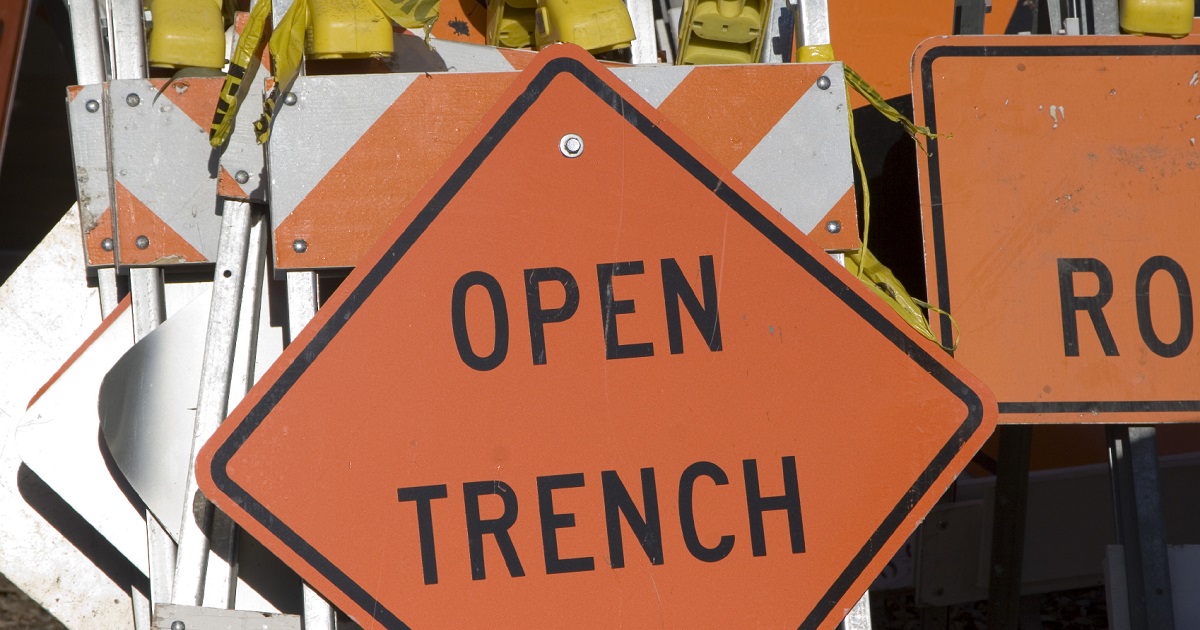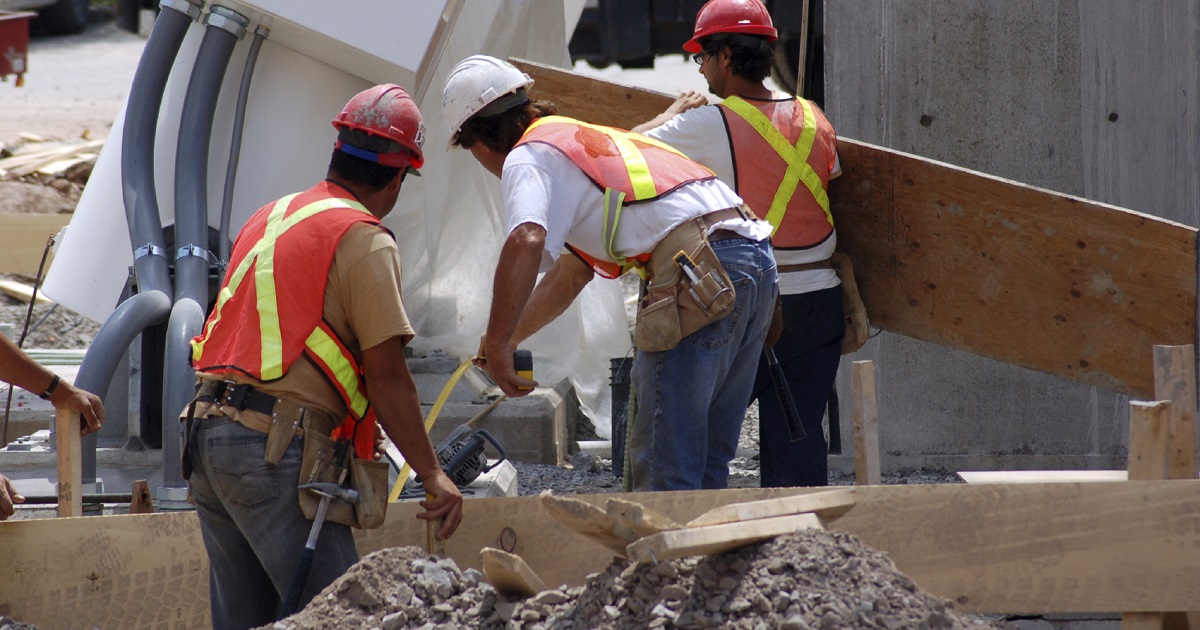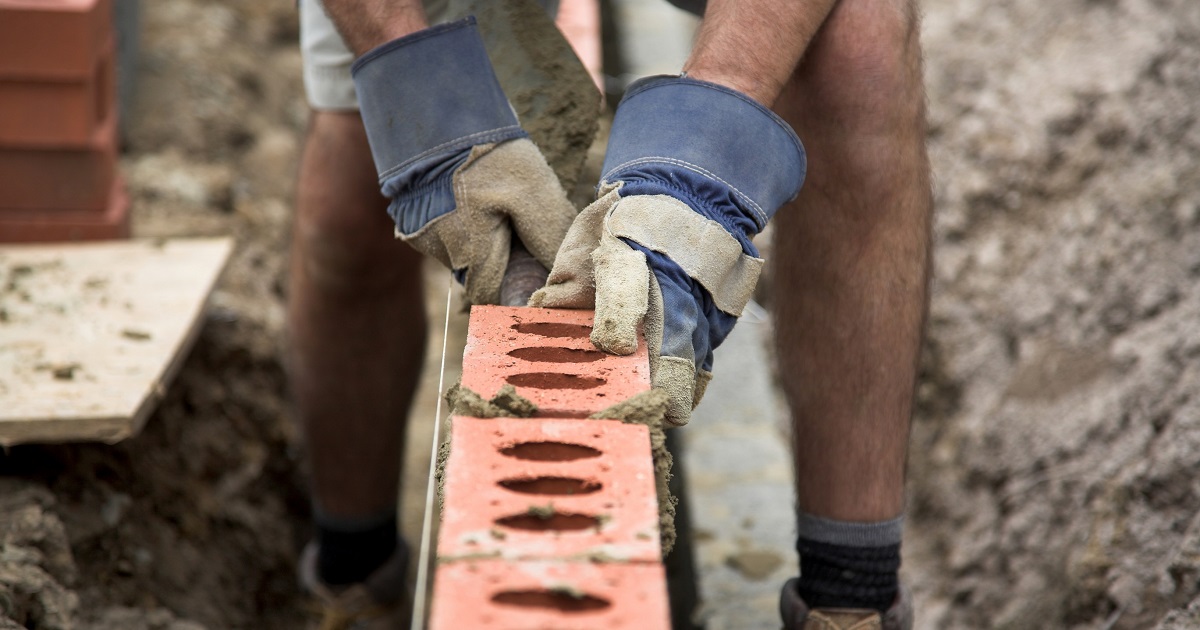For Media Inquiries
Contact Revee White, Director of Marketing and Communications at rwhite1@mem-ins.com or 573.499.4190.
An unprotected trench is one of the most dangerous settings you can work in. It’s crucial to know trench safety guidelines. OSHA reports the fatality rate for excavation work is 112% higher than for general construction, which is already a high-risk industry.
Fatalities and serious injuries often happen when trench protection is not set up properly, or simply not used at all. OSHA standards require protection for trenches 5 feet or deeper. Unfortunately, many excavation crews are operating in noncompliance with these requirements.

A tale of two trenches
The price of skipping safety
In 2019, a Missouri Employers Mutual policyholder was doing excavation work. An employee was working in a trench about 20 feet deep. The trench did not have protective measures meeting OSHA standards. When it collapsed, the worker was buried.
He suffered fractures in multiple parts of his body, including his ribs and back. The long-term impact of these injuries is still unclear, but he could have permanent work restrictions that prevent him from continuing his career in excavation.
The estimated cost of this workers compensation claim is several hundred thousand dollars in medical costs and indemnity. The policyholder also incurred an additional several hundred thousand dollars in OSHA fines for violating protection requirements. Of course, a claim of this size will also significantly impact the policyholder’s work comp premium and insurability.
In all, an incident that could’ve been avoided with safety measures will cost more than half a million dollars. Despite this staggering amount, we know the worker injured in the collapse paid the ultimate price.
Trench safety systems work: a happier ending
Earlier this year, another MEM policyholder also experienced a cave-in during trench work. However, this business had recently implemented a new trench box purchased with the help of the Safety Grant program.
The employee working in the trench was protected from the collapsing soil by the trench box and walked away with no injuries. That employee is also the policyholder’s son, which adds another layer to the impact an injury would’ve had on this business. He has a 10-year-old daughter who got to greet her dad at home that night, thanks to safety protocol.

Return on trench safety: an ROI case study
Comparing these two trench collapse scenarios, it’s clear that following safety guidelines is worth the investment. But can we put a number on that return?
In fact, we can. While no one can put a price on a human life or the true cost of lifelong injuries, we can look at case studies for examples of the return on investing in trench safety equipment.
Hard and soft claim costs
We talked about the hard and soft costs of workplace injuries in our Return on Safety podcast episode. Every compensable injury has hard costs like increased insurance premiums, OSHA fines, legal fees, and repair work. There are also soft costs lying under the surface. Costs like lost productivity, cost of hiring and training, and reputation damage are harder to quantify but can be significant.
Example return on investment
Here’s an example of an ROI calculation performed by one of MEM’s safety and risk experts. It examines the return on the trench box described above.
| Return on Investment Calculation | |
| Cost to implement trench safety box | $17,042 |
| Value of avoiding loss (direct and indirect claim costs to policyholder) |
$247,048 |
| Total return on investment | $230,006 |
On an investment of about $17,000, that’s more than a 1,000% return! With the addition of the MEM Safety Grant to help buy the equipment, the policyholder’s true ROI was even higher.
These numbers might seem unbelievable, but Tim Wilson, Safety and Risk Services Regional Manager, says his team sees them all the time.
“It’s difficult to estimate the costs associated with having a claim,” Wilson explained, “but it’s common for situations like a trench cave-in to result in at least one ‘willful’ OSHA citation. These fines can be very large. And that’s just one cost among all the hard and soft costs associated with this type of claim.”

Trench safety systems to protect workers
It’s every business’s responsibility to have safety policies in place and enforce them. If your employees see that safety rules don’t apply – or only apply some of the time – those rules are no longer doing their job to protect employees.
Make your expectations clear. Put your safety rules in writing, talk about them with your employees, and make sure they’re followed every single time someone enters a trench.
Three protective systems
OSHA outlines the three primary protective systems for trenching and excavation:
Sloping/benching: Cut the trench wall back at an angle inclined away from the excavation.
Shoring: Install supports to prevent soil movement and cave-ins.
Shielding: Use a trench box to protect workers in the event of a collapse.
Trenches five feet or deeper require cave-in protection. In addition, trenches 20 feet or deeper must have a protective system designed by a professional engineer.
Download the Tool Box Talk
Here are some more excavation safety best practices. Download our Excavation Tool Box Talk to share this information with your employees.
- Always wear seat belts when operating machinery.
- Take measures to protect trenches over 5 feet deep from cave-in.
- Use ladders to access trenches that are 4 feet or deeper.
- Wear appropriate safety gear.
- Locate underground utilities before beginning work.
- Be aware of overhead electrical hazards.
- Verify the atmosphere in the trench is safe.
Every year, our trainers at MEM partner with Missouri One Call System (Dig Rite) to provide excavation safety training across the state of Missouri. They’re currently planning virtual training as well as small, in-person events when guidelines allow.
Follow MEM on LinkedIn to find out when these free trainings are available to you, and how you can attend the annual Damage Prevention & Excavation Safety Summit, held virtually on Dec. 7-11, 2020.